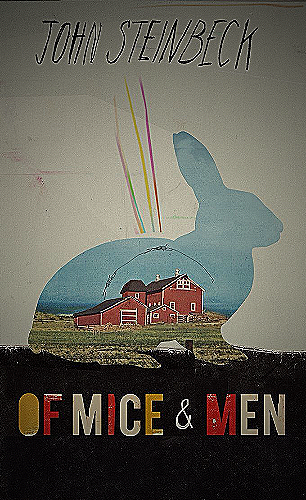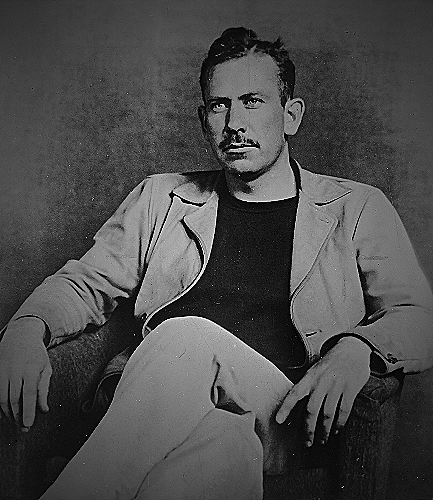The novel “Of Mice and Men” takes its name from Robert Burns’ poem “To a Mouse, on Turning Her up in Her Nest with the Plough” (1785), which contains the line “The best laid schemes o’ mice an’ men/ Gang aft agley.” The origins of the title are rooted in the themes of the book, namely the idea that even the best-laid plans can go wrong, and the struggle of the characters to pursue their dreams amidst difficult circumstances.
Check out this Youtube video: “‘Of Mice and Men’: The title explained (and original … – YouTube” to unravel the mystery behind the book’s enigmatic title.
The Origin of the Title
The title “Of Mice and Men” is taken from Robert Burns’ poem “To a Mouse”. The novel’s author, John Steinbeck, borrowed the title from the poem’s line “The best laid schemes o’ mice an’ men / Gang aft agley”.
This line highlights the theme of the novel, as the characters’ well-intentioned plans do not always go as they hoped. Steinbeck’s work explores the unpredictable nature of life and the struggle to achieve the American Dream in the face of adversity.

Analysis of the Title
The book’s title “Of Mice and Men” was derived from Robert Burn’s poem “To a Mouse,” which highlights the vulnerability of life. The line “The best-laid plans o’ mice an’ men/Gang aft agley” refers to how even the best plans can go awry, just like the characters’ hopes and dreams in the book.
Steinbeck’s title is relevant to the storyline, as the two main characters, George and Lennie, are like “mice” trying to survive in a world that is harsh and unforgiving to those who are weak. Indeed, the title speaks to the themes present in the book and emphasizes how happiness can be unattainable for those who do not have the strength to fight against their circumstances.
The title also emphasizes the fragility of the characters’ relationship, like a nest that can be destroyed at any moment. It highlights how everything in their lives can be taken away in an instant, and their dreams can disappear in a blink of an eye.
The Author, John Steinbeck
John Steinbeck, the author of Of Mice and Men, was an American writer who lived from 1902 to 1968. He is considered one of the greatest writers of the 20th century and is known for his realistic and empathetic portrayals of working-class people.
Steinbeck grew up in California and worked various jobs, including as a farm laborer and a journalist, before becoming a full-time writer.
Steinbeck’s experiences working as a laborer and witnessing the struggles of ordinary people influenced his writing. Of Mice and Men, which was published in 1937, is a story of two migrant workers trying to make a living during the Great Depression.
The novel deals with themes such as loneliness, friendship, and the American Dream.

The Novel: Plot, Characters, and Themes
Plot
Of Mice and Men is a novel by John Steinbeck published in 1937. The novel is set in the Great Depression era and tells the story of two migrant farm workers, George Milton and Lennie Small who dream of owning their own land and farming it.
As they travel from place to place to find work, they encounter a range of characters, as well as harsh and difficult working conditions.
Characters
The two main characters in Of Mice and Men are George Milton, a small, wiry, quick-witted man, and Lennie Small, a large, lumbering man with a mental disability who is dependent on George. Other key characters include Candy, an aging ranch hand; Curley, the boss’s aggressive and violent son; and Curley’s wife, a lonely woman whose dreams have also been shattered.
Themes
The novel explores several main themes, including the American Dream, loneliness, and the nature of power. The title “Of Mice and Men” comes from Robert Burn’s poem “To a Mouse,” which resonates with the novel’s themes of the impermanence of home and the harshness of life for the most vulnerable.
The novel portrays the harsh realities of life during the Great Depression and the difficult choices that individuals must make to survive in such a challenging world.
Adaptations and Reception
Stage, Film, and Radio Adaptations
Of Mice and Men has been adapted into various forms of media, including stage, film, and radio adaptations. One of the earliest adaptations was a play version by Steinbeck himself, which premiered in 1937.
Since then, there have been numerous film adaptations, including a 1939 film starring Burgess Meredith and Lon Chaney Jr., a 1992 version directed by Gary Sinise and starring John Malkovich and Gary Sinise, and a 2019 radio adaptation starring James Franco and Chris O’Dowd. Each adaptation has its own interpretation and portrayal of the characters, themes, and events in the novella.
Reception
The critical reception of Of Mice and Men has been mixed over the years. When the novella was first published in 1937, it received mixed reviews but went on to become a popular success.
Some critics praised its portrayal of the struggles of migrant workers during the Great Depression, while others criticized its perceived sentimentality and lack of depth. Despite its mixed reception, Of Mice and Men has become a classic of American literature and is still widely read and studied today.
Conclusion
Steinbeck titled his novella “Of Mice and Men” after being inspired by the poem “To a Mouse” by Robert Burns. The poem’s themes of impermanence and vulnerability resonate with the central themes of the novel.
“Of Mice and Men” is a story about the harsh realities of human existence and the struggles of pursuing dreams in a world that often works against them. The story follows the experiences of George and Lennie, two displaced men trying to make a life for themselves in the Soledad area.
Despite the challenges they face, George remains loyal to Lennie and takes care of him. The enduring appeal of Steinbeck’s powerful novel lies in its moving realization of the American Dream and the human condition.
